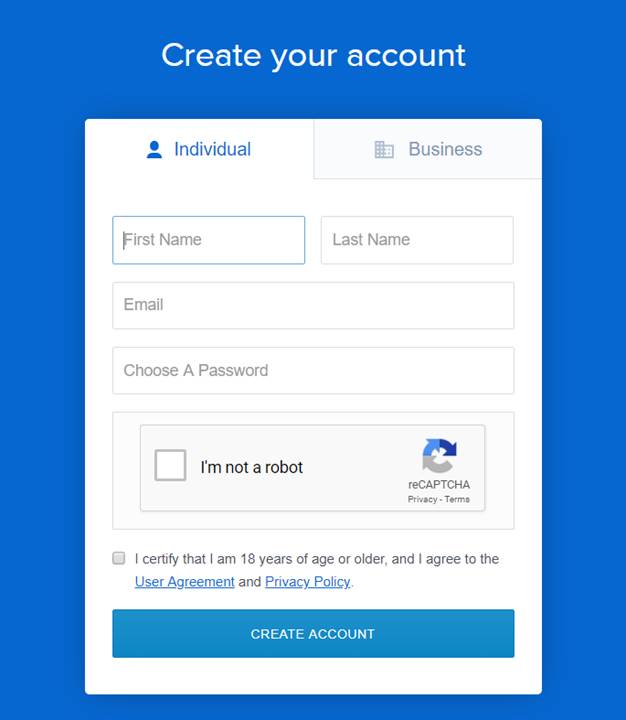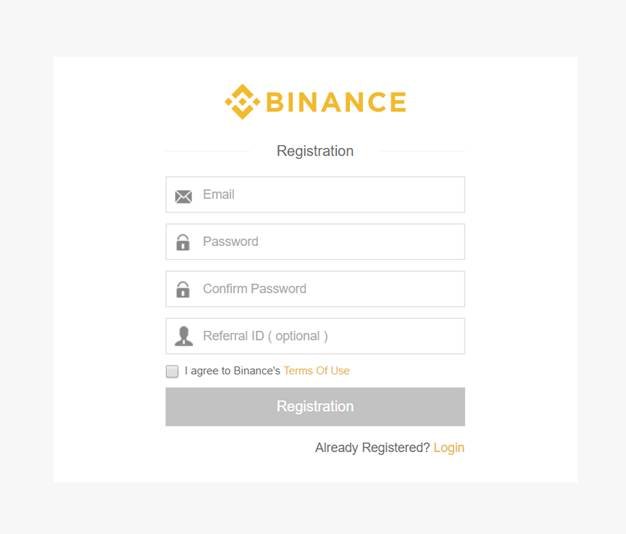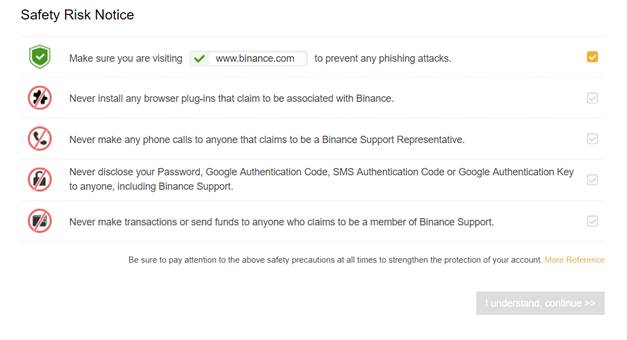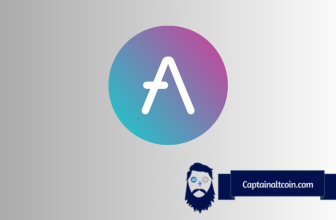
If you are about to make your first venture into the world of cryptocurrencies, chances are you were directed either towards Coinbase or Binance.
While these two are currently the most popular cryptocurrency exchanges out there, they do have some very distinct differences between each other. This Coinbase vs Binance review will focus on pointing out those differences and hopefully help you, our reader, decide which cryptocurrency exchange will best suit your needs.
Before we move on, here is a quick bottom line upfront for those of you who are in a hurry:
It used to be crypto only exchange back in the day but it is a fully fledged crypto ecosystem today. You can deposit fiat via dozens of payment methods, trade more than 500 listed coins, do spot, margin, futures and option trading, earn crypto through Binance staking and savings, buy and sell via Binance P2P marketplace and even create and trade NFTs on its newly launched NFT marketplace. Binance also has its own trading trading bot. Binance launched its own crypto credit card. While it is still unavailable in large parts of the world, it is one of the best crypto cards you can get.
Binance has
✅ more liquidity than any other exchange in the world
✅ Low trading fees
✅ wide range of coins for trading – more than 1000 trading pairs
✅ User verification process fairly simple
✅ vast number of user-friendly services such as savings and staking, NFT creation option and marketplace
On the other hand, Binance is
❌ not regulated
❌ not available in the US
❌ often scraps some of its popular features due to the regulatory pressure
❌ its BNB token is very dubious and appears to be a money grab by Binance’s founder CZ.
❌ it is not available in the US and its Binance US version is severely lacking in comparison to the main platform.
Furthermore, U.S. customers can’t pay via credit card or complete margin trades, whereas Coinbase supports credit card payments, and you can make margin trades on Coinbase Pro.
In comparison to Binance, Coinbase is more geared towards U.S. residents and less so towards international traders. It is essentially the easiest fiat on ramp for new users.
Coinbase offers
✅ safe and regulatory compliant, FDIC insured platform for buying and storing crypto
✅ simple DCA (dollar cost average) method to buy crypto on your predetermined schedule,
✅ the ability to withdraw funds to your PayPal account.
✅ You can also earn crypto by watching short videos via Coinbase Earn
✅ Store your own cryptocurrency in a digital vault with time-delayed withdrawals and
✅ spend cryptocurrency via cards, and accumulate rewards
Biggest drawbacks of Coinbase are its:
❌ expensive fees
❌ lack of privacy (it quickly gives out its user data to almost anyone who asks for it)
❌ small number of trading assets
❌ unavailable in most of the world
Binance is best for a more advanced user that wants to test his luck with trading obscure crypto coins. Coinbase is best for a curious but busy newbie who wants to invest in the new, exciting asset class but has not time to follow it closely.
What you'll learn 👉
Initial overview

Coinbase is a USA-based company currently operating two brands under its wings: Coinbase, focused on fiat to crypto transfers of value and Coinbase Pro, focused on crypto for crypto exchange. It gathered its initial capital required for starting up the business by using the services of the investment sector; it has since remained faithful to this method of financing, with many venture capital firms like Union Square Ventures, Ribbit Capital and the famous Andressen Horowitz deciding to invest at some point.
Coinbase, whose users primarily deal in bitcoin and ethereum, reported that its revenue soared 847% in the first quarter of 2021 to $1.8 billion, and that it now has 56 million verified users. In April, it became the first crypto company to be listed on Nasdaq, after an extremely successful IPO. The cryptocurrency-exchange stock opened 52% above its reference price of $250. And Coinbase’s public debut became the seventh-biggest U.S. IPO ever, based on market cap at the close of the first day of trading.
Binance is a crypto behemoth, largest crypto platform by far, founded by Changpeng Zhao, a computer whiz previously known for his role as the CTO at OKCoin. Initial funding for Binance was collected through an ICO of BNB, which serves as Binance utility token and can be traded on the exchange.
Binance vs. Coinbase: Features
There are more differences than similarities between Coinbase and Binance.
Binance (Binary + Finance = Binance) is the largest crypto exchange. It used to be crypto only exchange back in the day but it is a fully fledged crypto ecosystem today. You can deposit fiat via dozens of payment methods, trade more than 500 listed coins, do spot, margin, futures and option trading, earn crypto through Binance staking and savings, buy and sell via Binance P2P marketplace and even create and trade NFTs on its newly launched NFT marketplace. Binance also has its own trading bots. Binance also has its own crypto credit card. While it is still unavailable in large parts of the world, it is one of the best crypto cards you can get. Furthermore, U.S. customers can’t pay via credit card or complete margin trades, whereas Coinbase supports credit card payments, and you can make margin trades on Coinbase Pro.
In comparison to Binance, Coinbase is more geared towards U.S. residents and less so towards international traders. It is essentially the easiest fiat on ramp for new users, offers a simple DCA (dollar cost average) method to buy crypto on your predetermined schedule, the ability to withdraw funds to your PayPal account. You can also earn crypto by watching short videos via Coinbase Earn.
Store your own cryptocurrency in a digital vault with time-delayed withdrawals and spend cryptocurrency via cards, and accumulate rewards.
Account creation
Coinbase account creation is a relatively simple process. Go to the Coinbase website and click on the Sign up button in the top right corner of the web page. This will take you to the Create your account screen.

The screen will offer you two tabs, one for creating an individual account and the other for business related accounts. On the first tab reserved for individuals you can enter your name, email and preferred password. Click the captcha to confirm you aren’t a bot, click on the user agreement box and click on the Create Account button. You will receive a verification link in the email address you choose for your account, click it to move onto the next step.
Next screen will require you to enter a phone number which will be used to secure your account and your transactions. An SMS containing the code you need to enter to complete your sign-up will be sent to this number. Enter the code and your Coinbase account will be unlocked and ready for use. Business related accounts will have an option to either sign up for Coinbase Pro, Coinbase’s cryptocurrency exchange platform or to enable cryptocurrency payments for their goods/services through the Coinbase Commerce option.

Most of the process with Binance is similarly simple. You’ll need your e-mail, a strong password (they require that your password has at least 8 letters/one number/one capital letter), and optionally a referral ID that gives bonuses to the person who linked you to Binance via his referral link. When all of this is filled out, click Registration and complete the slide verification that will pop up on your screen. You’ll receive the verification mail and be asked to log in again, once you click on the verification mail.

A safety risk notice will pop-up to ensure that your account is fully protected. Click all the boxes and continue. This unlocks the Level 1 account on the platform, and you will need to submit further verification (personal/business) to upgrade your account to levels 2 and 3.
Interface and trading

Coinbase offers a pretty sleek, beginner friendly interface. A dashboard with an overview of your portfolio, your transactions and your desired coin’s price and graph will greet you upon your initial login. Tabs in the top left offer you an ability to Buy/Sell a coin. You can only place market buy/sell orders here, limit orders or something more complicated aren’t available. Clearly this won’t suit any advanced user who is looking to place stop losses or margin trade.
You can deposit funds onto Coinbase via a bank account (should generally take 4-5 business days), while card deposits are instant. Withdrawals can take anywhere from 2 to 4 business days. On Coinbase various things will determine your maximum transfer amount: your buying history, your account age and your verification level. You can easily see your current level and how to increase it by heading to this page. Depending on your current level (range from Level 0 through Level 3), you can follow these quick steps to increase your account level:
– Verify phone number
– Verify personal information
– Verify photo ID (valid state ID for US customers)

Binance interface, while containing more features, isn’t that complicated to master either. The platform itself has two interfaces, Basic and Advanced, which can be switched in the upper left part of your Binance home screen (under the Exchange tab). The advanced view is shown in a dark theme and offers analytics tools that can be used to perform some basic TA. Some more advanced users will still find these tools somewhat lackluster. They also won’t be happy with the fact that the exchange offers only market and limit orders, again lacking both margin trading and stop-loss features.
An individual trader can deposit any amount as there is no deposit limit. The withdrawal limit depends on the verification tier. Users with Level 1 verification can only withdraw currency worth 2BTC per day. However, users with Level 2 verification can withdraw currency worth up to 50BTC per day.
Available cryptocurrencies
Coinbase used to be very limited in terms of supported coins, but they changed their listing philosophy in late 2018. Nowadays, Coinbase has more than 50 coins you can buy on their main platform while their Pro Coinbase version has well above 200 trading pairs.
As for Binance, it is an exchange which currently offers more than 500 various coins and tokens for trade with more than 1000 trading pairs, including but not limited to Bitcoin, Bitcoin Cash, Bitcoin Gold, Ethereum, Ethereum Classic, EOS, Dash, LiteCoin, NEO, GAS, Zcash, Dash, Ripple and more. They even have their own coin, BNB, which can be used to lower your trading fees on platform.
As mentioned before, Binance also supports numerous ICO projects and helps them by listing their tokens on the platform. This willingness to add new coins has brought some criticism to the platform, as many feel they don’t do their due diligence when it comes to researching if the coin is a scam or not. Some scam coins have indeed been traded on the platform, which gives weight to these accusations. Binance does not offer fiat for crypto trading.
Binance or Coinbase: Fees
| Fees | Binance | Coinbase |
|---|---|---|
| Bank account | Free outside of the U.S. | 1.49% |
| Wallet | N/A | 1.49% |
| Debit/credit cards | 3% to 4.5% | 3.99% |
| ACH transfer | Free | Free |
| Wire transfer | $15 for U.S. customers | $10 deposit, $25 withdrawal |
| Crypto conversion | N/A | 0.50% to 2% |
| Purchases | 0.02% to 0.1% | 0% to 0.50% |
| Trades | 0.02% to 0.1% | 0.50% |
| Other fees | 0.50% instant buy and sell fee | $0.99 to $2.99 based on the amount |
Coinbase is notorious for having some pretty hefty fees which move in the range from 1.49% to 3.99% per purchase of crypto with fiat. Sometimes these fees can be even larger. The fee structure is somewhat complicated and you can check the official Coinbase’s support page on fees for a full insight.
Binance on the other hand offers some of the lowest industry fees out there and frankly blows Coinbase out of the water in this segment. It has a flat 0.1% fee for all trades you make on the platform. If you choose to pay your fees with the Binance native currency (BNB), you are entitled to a 25% reduction in fees, so that is a 0.075% maker/taker fee.
Security
Coinbase is based in USA, San Francisco, and is making sure to adhere with US regulations with every action it takes. It was the third crypto exchange to receive the New York Bitlicense. In 2018, Coinbase acquired an e-money license from the Financial Conduct Authority (FCA), which allows it to provide payment services in the UK and issue e-money. Abiding by the FCA requirements, Coinbase will be keeping clients in segregated funds and will observe operational standards on par with the other regulated financial institutions. It has never been hacked before, barring some users suffering from phishing attacks (which are always the fault of users visiting the wrong website link). There was also an issue with some customers being overcharged some months ago, but the exchange still maintains a strong reputation in security circles.
Binance is a multi-location (Hong Kong, British Virgin Island, Singapore, Malta, Jersey) based company that has been hacked once so far. The biggest issue with the exchange is its avoidance of regulators as it is notorious for living in a compliance gray zone. Binance is secretive about the ways it stores its funds, but has shown in the past that it has ways of protecting them. Both Coinbase and Binance offer 2FA which is always a good thing to see.
Customer support
Both Coinbase and Binance had their fair share of bad customer reviews, but this comes as a growing pain of every major exchange. However it would seem that Binance fared somewhat better when it comes to processing and handling user support inquiries, as there are many posts from people who are having their customer support tickets put on hold for months on Coinbase.
Final thoughts – Is Binance better than Coinbase?
Both Binance and Coinbase Pro (formerly GDAX) are excellent platforms that have their own strengths and weaknesses. If you are a beginner looking to get into cryptocurrencies, using the combination of these two might be an excellent choice. Use Coinbase to purchase BTC/ETH, and then move the purchased coins to Binance to purchase a quality altcoin. This strategy has been tried and tested many times and you will not regret using it.







